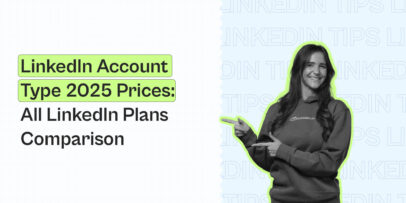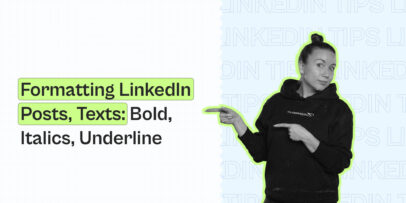Latest LinkedIn Algorithm Changes: How to Maximize Your Post Reach
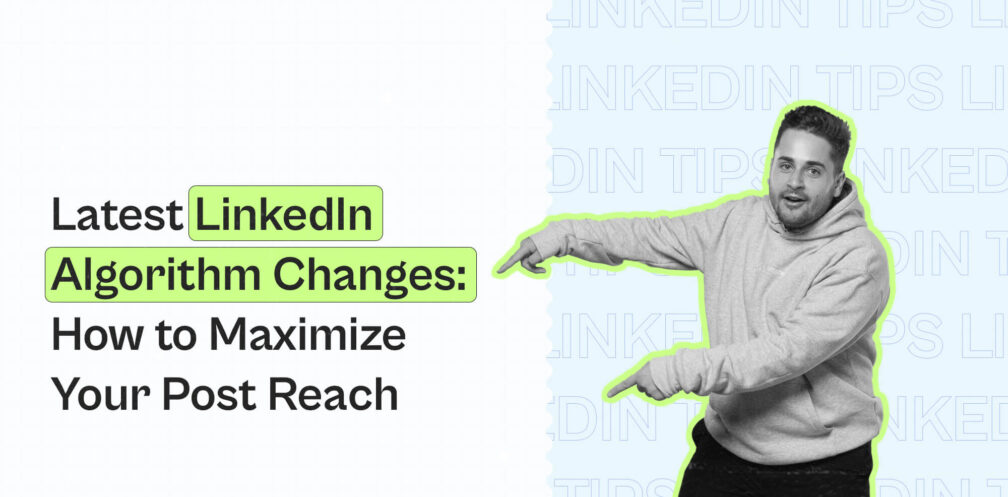
Since July 2023, LinkedIn changed their content ranking algorithm which affected everyone on the platform.
Now your posts may reach more or less people than what you were used to.
What does this mean for your content and how do the new algorithm changes work?
Spoiler alert: You now need to create quality content for your target audience based on your insights and expertise.
Wondering what this looks like in practice?
Sometimes, it’s hard to understand what LinkedIn rewards and what it doesn’t when it comes to content on the platform.
Fortunately, based on research and insights from LinkedIn’s own team, we’re closer to understanding the latest LinkedIn algorithm changes and how it affects your content.
So, if you want to start creating content that gets rewarded on LinkedIn, be sure to read on.
Here’s what we’ll cover below to help you get the most out of understanding LinkedIn algorithm changes:
- What changed with the LinkedIn algorithm updates within your feed
- Main metrics LinkedIn looks at to track success
- 5 Tips and best practices to optimize your LinkedIn posts after the algorithm updates
PS – Want to start generating leads on LinkedIn on autopilot?
Whether you’re creating content on the platform or doing outreach, be sure to join our private group The LinkedIn Outreach Family.
We’re constantly sharing the latest proven hacks and strategies in it for free!
What Are The LinkedIn Algorithm Changes And What Has Changed?
Essentially, because of the latest LinkedIn algorithm changes, LinkedIn wants you to share your own, personal knowledge and insights.
In fact, this is based on an official email from LinkedIn.

According to the findings, LinkedIn does NOT like humblebrags or personal updates from people who aren’t in your network.
In the past, people were using clickbait to game the algorithm and go viral.
LinkedIn has caught up to that and made its stance clear.
Here’s what this means for your LinkedIn content strategy.
How does the LinkedIn algorithm work?
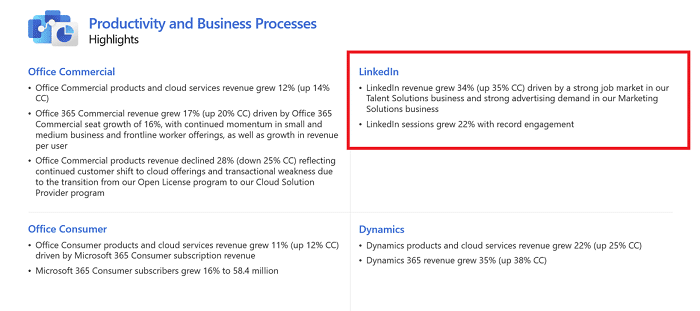
This makes sense.
During the pandemic, more people spent time on LinkedIn and shared content related to their personal lives.
Unfortunately, this also led to some people trying to take advantage of the algorithm.
So, LinkedIn shifted its gears to making users’ feeds more relevant and informative. Not just engaging and sticky.
Here’s what this means.
2 Main changes in how the LinkedIn algorithm works now
The 2 biggest algorithm changes you need to know about when it comes to content reach are as follows:
LinkedIn is prioritizing content from first-degree connections.
If you post content on LinkedIn, it is more likely that your followers will see your posts first.
So, LinkedIn wants you to optimize content based on your first-degree connections. And NOT third-degree connections.
Meaning, you’ll be seeing posts from your first-degree connections more by default.
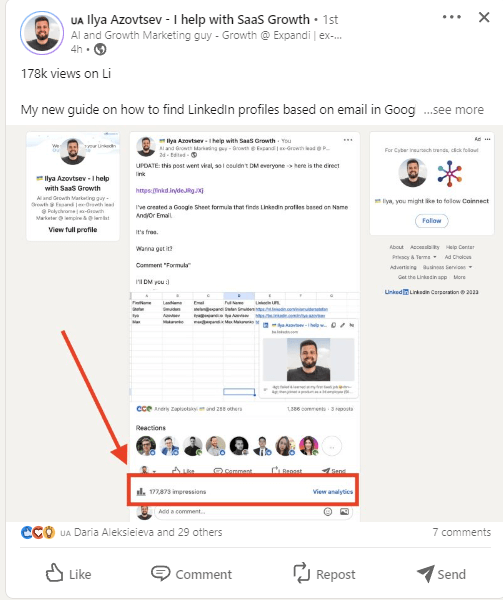
But the ones you see from third-degree connections are ones that went extremely viral or someone from your network engaged with it.
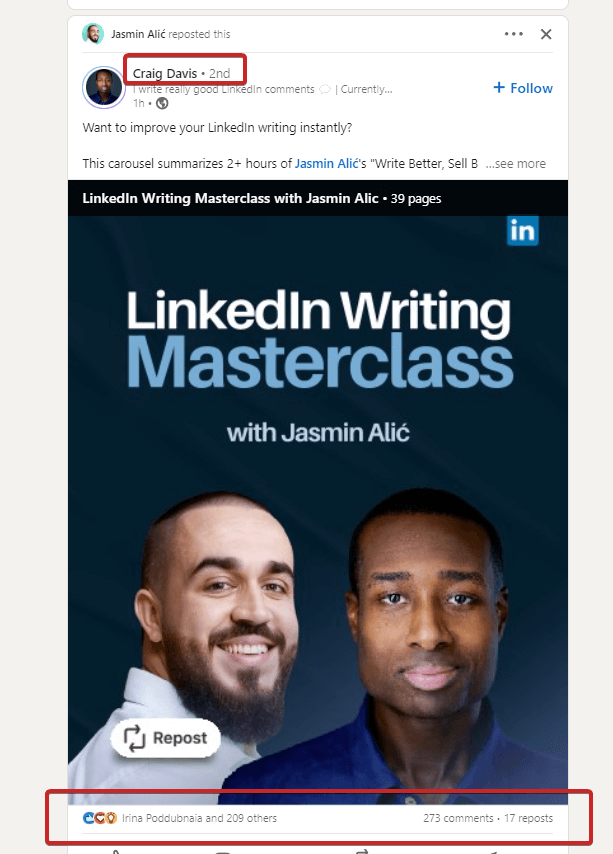
Here’s what this might look like in practice:
- Content for first-degree connections: Unique, insightful content that shares your knowledge and advice. Encourages conversation and drives meaningful comments from relevant users.
- Content for third-degree connections: Designed to gain reach and engagement, so that people comment and the reach extends to people outside your network.
Now, here’s the second change.
LinkedIn now highlights more expert content.
What does this mean and how does LinkedIn determine what content is “expert”?
The algorithm determines what expertise is relevant by identifying a user’s interests based on their profile, activity, and engagement.
For creators, consider:
- Your service or product solution.
- Who your target audience is.
- How optimized your LinkedIn profile is and the best practices for writing (more on this in detail below).
For example, a LinkedIn SaaS creator creating content about LinkedIn, lead generation, and outreach makes sense.
But creating misleading and clickbait content on topics outside your expertise is NOT the way to go.
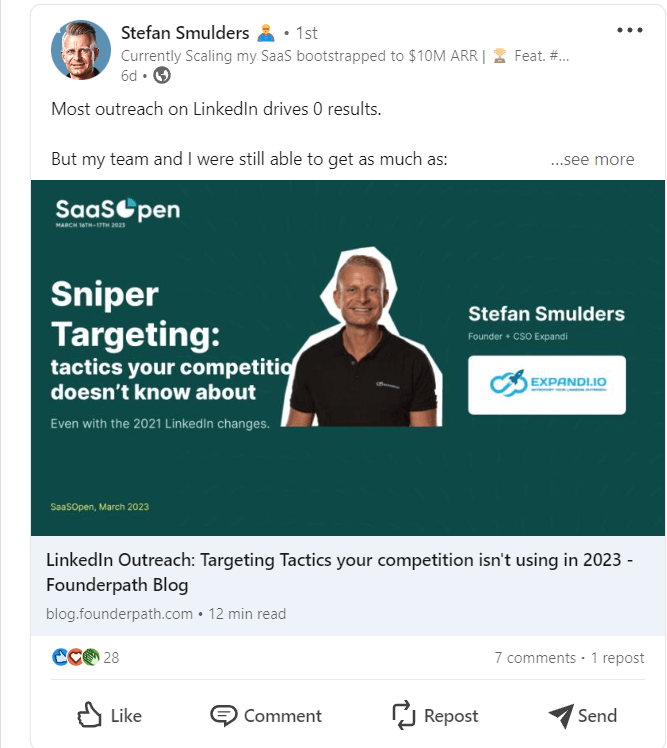
How does this show I’m an expert on this topic?
That’s because my profile is entirely optimized around being a pro at LinkedIn and SaaS outreach.
Through my headline, previous content, past experiences, and more. Hence my content about LinkedIn outreach typically performs well.
In addition to optimizing your profile, make sure you use relevant keywords related to what you do.
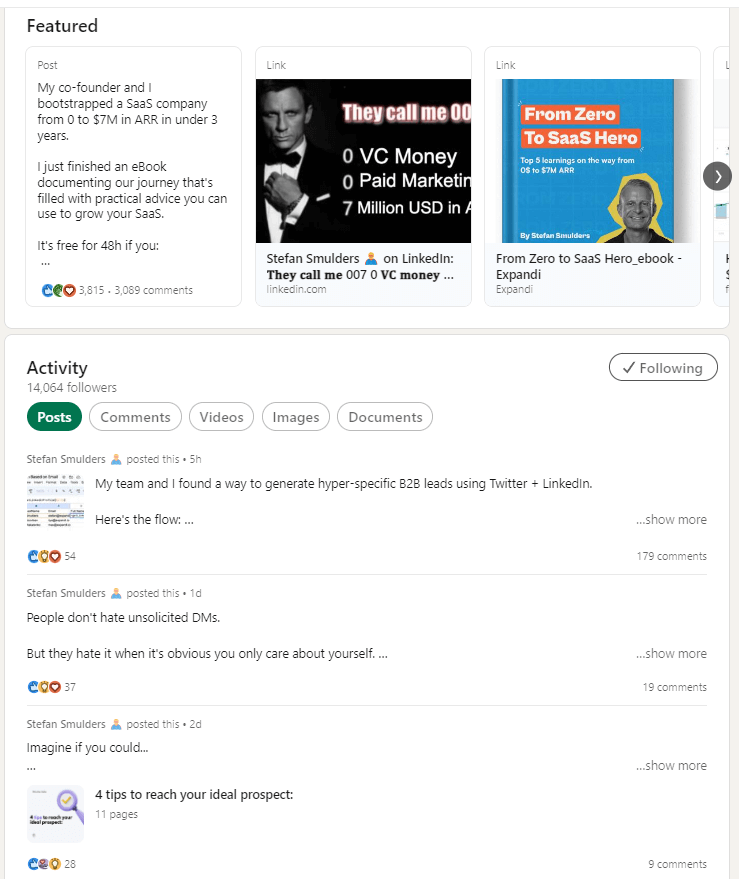
The New Metrics To Track For Succes With Latest LinkedIn Algorithm Changes
The new LinkedIn algorithm uses 3 main metrics to evaluate your content:
- Relevance: How relevant your post is to your audience. Are you creating content that is relevant to your audience that they care about?
- Expertise: Your expertise and knowledge in your subject area or niche. What makes you an expert or qualified to be talking about your topics?
- Engagement: How many meaningful comments you get from people actually interested in your post topics. You can optimize for this by inviting a discussion, and not cheap, pointless engagement (see tip on this below).
Another way to look at your LinkedIn content success after the algorithm changes is through LinkedIn Top Voices.
Top Voices is an invitation-only program on LinkedIn that features a global group of experts covering a wide range of topics.
You can recognize a Top Voice member with their unique badge on their profile.

Top Voices are vetted to ensure they meet high trust standards, are constantly active on the platform, and provide valuable expertise.
To do this, LinkedIn looks at your expertise in content through your unique, original contributions and insights on a topic.
Some of the biggest Top Voices have gotten their badges from:
- Being an award-winning speaker or author.
- Being a TED speaker.
- Their career achievements.
- Or another form of recognized talent.
These are some of the many examples that help with the latest LinkedIn algorithm changes.
For example, being the author of an award-winning book, and then optimizing your profile around that accordingly, is a sure way to position yourself on the platform.
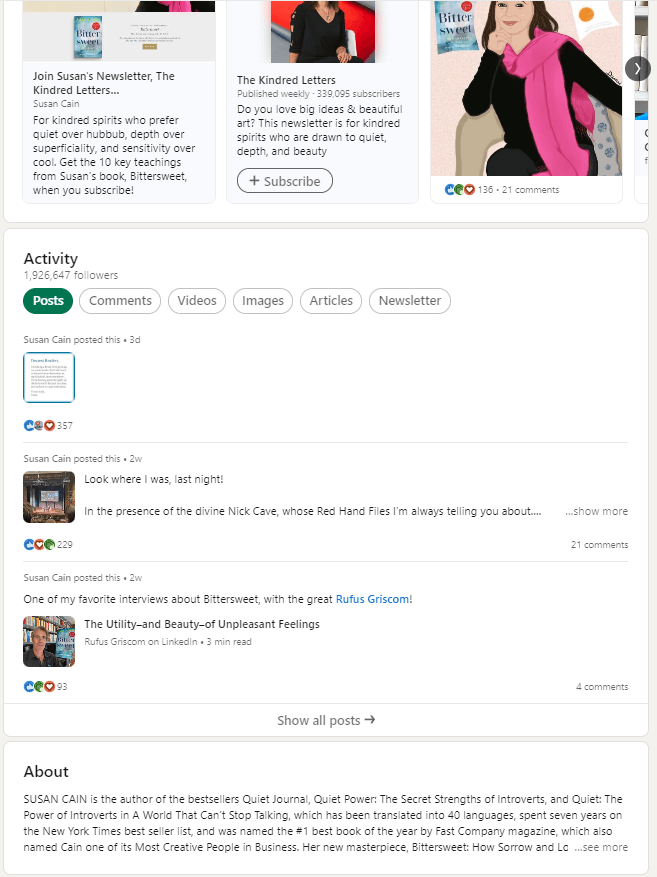
Every year, LinkedIn honors over 300 writers by compiling their own list.
However, just consistently posting on LinkedIn will not help you reach the list. Instead, it’s all about connecting with people, creating a tribute, and networking.
Some of the parameters LinkedIn looks at when deciding on Top Voices include:
- Engagement provided by posts, responses, comments, and shares across all content created by each user.
- Follower growth over time-based on posting cadence.
- Expertise and achievements based on your background and experience.
While you don’t have to be a Top Voice on LinkedIn to succeed in growing your audience through content on the platform, this does give certain insights into how LinkedIn measures success.
Which includes:
- Being consistent in your writing and content.
- Creating real content, based on your unique experience, background, and insights.
- Joining public opinion and engaging with other people
- Sharing videos, visual, and personal content.
Now, let’s take a look at some actionable tips and best practices with the latest LinkedIn algorithm updates in mind when creating new content.
5 Tips To Optimize Your LinkedIn Posts After The LinkedIn Algorithm Update
As mentioned above, you should be creating content for your core audience, around topics you’re an expert in.
Here’s what this might look like in practice with examples.
1. Re-optimize your LinkedIn profile
When optimizing your LinkedIn profile, you should write for your audience AND the LinkedIn algorithm.
In other words, the bots that crawl through LinkedIn profiles as part of the algorithm should be able to understand what you do, who your audience is, and what makes you an expert.
- Are you an award-winning author?
- Do you have years of experience in your industry?
- Achieved something of note, that you can attribute in results or percentages?
Consider using clear, direct sentences such as:
- “I help (companies) achieve (outcome)”.
- “Helping (audience) get (results)”.
- “Working with (target audience) achieve (desirable outcome)”
This way, there’s no confusion in what you do.
So, when someone lands on your profile, they should be able to tell at a glance:
- What you do.
- Why they should connect with you.
- How your solution or offer helps them.
In the past, we’ve covered how to optimize your LinkedIn profile, based on the 11 essential profile sections. So, check out that guide if you haven’t done so yet.
To see this in practice, observe what creators and niche experts are doing right on LinkedIn.
Based on their featured section, experience, posts, and more.
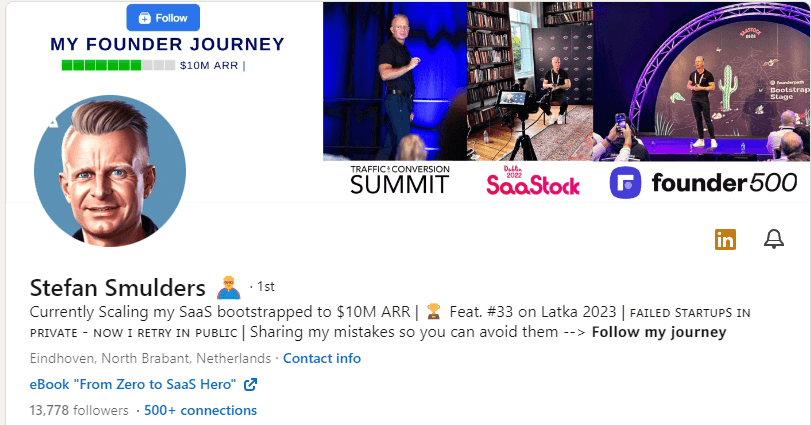
Who is your audience, what are their pain points, and how do you help?
Then, optimize your profile based on those elements.
This makes it clear to your audience AND the LinkedIn algorithm what you do.
As a cherry on top, this also improves your LinkedIn SEO.
2. Write on your core subjects
Unlike other channels (Facebook, TikTok, Twitter, etc.) LinkedIn is NOT focused on viral posts.
Instead, they want to ensure that the right people see the right content on the platform.
So, instead of writing for “everyone”, you should be writing for a specific target audience and be consistent about that.
Can you back up what you say with experience and proven expertise?
As the founder of Expandi (LinkedIn automation SaaS), I constantly create content about:
- LinkedIn prospecting.
- Outreach.
- Sales.
- Lead generation.
- And more.
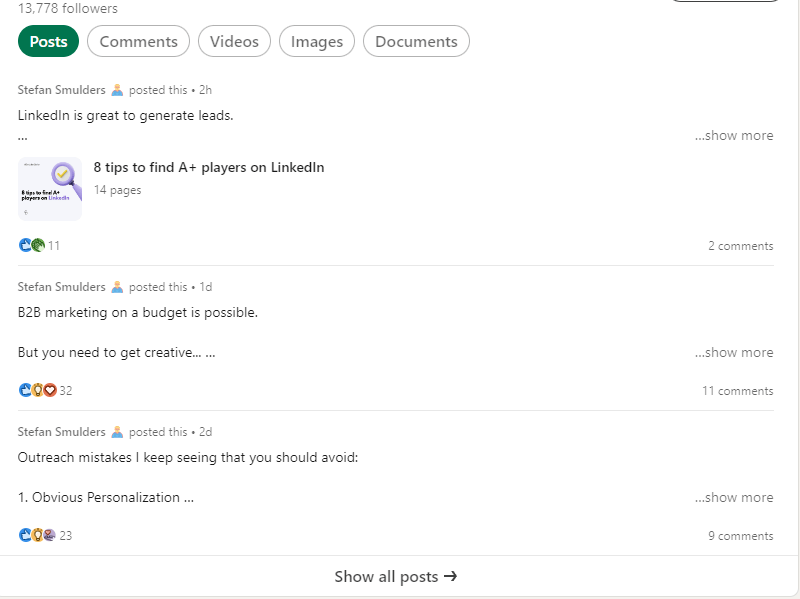
But if I woke up tomorrow and started posting about data management, LinkedIn might think:
- What is your connection to data management?
- Why is your profile optimized around marketing and outreach?
- How is that connected to what you do (founder of Expandi)?
So, chances are, if I started creating content in that niche, they would not get the best reach or engagement.
3. Invite meaningful comments
With automation tools, almost everything can be fully automated now.
Though, this can be a bad thing.
In the past, people would abuse LinkedIn engagement pods to kickstart the algorithm.
This is a form of gaming the algorithm, which LinkedIn does NOT want you to do.
If your post gains a number of likes and comments within the first few minutes of you posting, LinkedIn will typically boost your reach. Engagement pods are used to abuse that algorithm.
Those engagement pods also used to invite low-quality comments such as:
- “Great post!”
- “Agreed, (first_name).”
- “So true!”
Not very engaging, is it?
Instead, consider inviting meaningful comments by ending your posts with call-to-actions such as:
- “What do you think about this?”
- “How are you doing X at your company?”
- “What are you struggling with X at the moment?”
This, in turn, invites comments which are personalized, specific, and not automated.
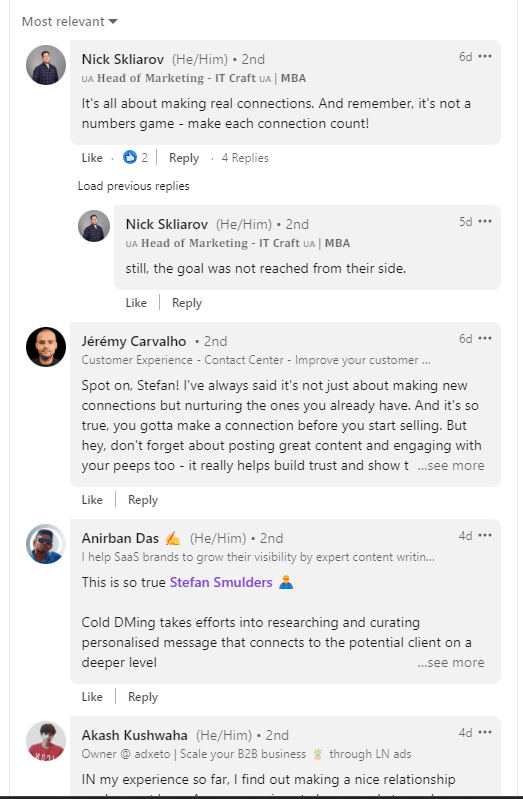
4. Get personal the right way
In the past, some people used to abuse personal content as well, by posting clickbait and sensational content that stood out in the wrong way.
Now, LinkedIn uses AI to classify posts into different categories. Including whether or not your post contains an opinion or advice related to your niche.
It’s trying to see whether your post offers generic advice or information (less rewarded) or is based on your perspective or expertise (more rewarded).
It’s hard to decipher how the AI and algorithm work exactly, so, you’ll have to use your intuition with specific examples.
For example, this picture alone might seem like an irrelevant, funny meme.
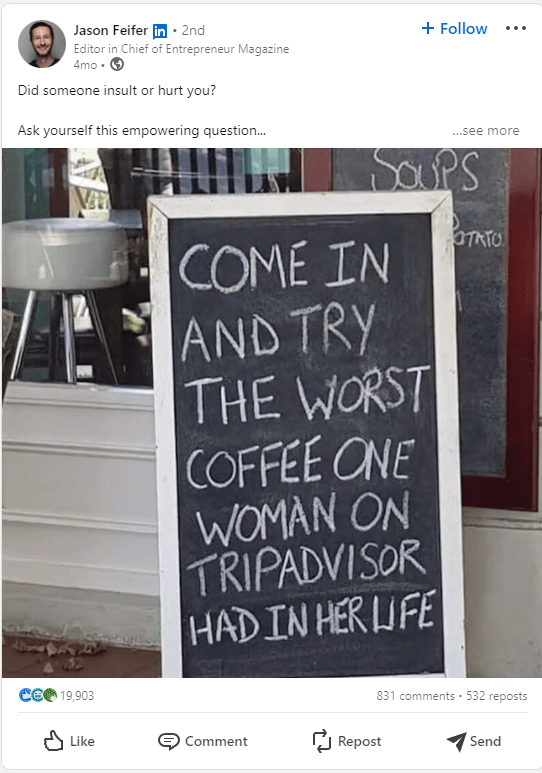
But in the body text, the author writes about a lesson on empowering yourself through autonomy. Thus, as you can see, the post performed incredibly well as it resonated with his audience.
Sharing just the image as a way to make people laugh would NOT work.
Let’s take another example.
- A personal photo of myself – doesn’t indicate much.
- Sharing my “overnight success’ story and background on how I ended up founding Expandi – resonates with a lot of entrepreneurs and business owners.
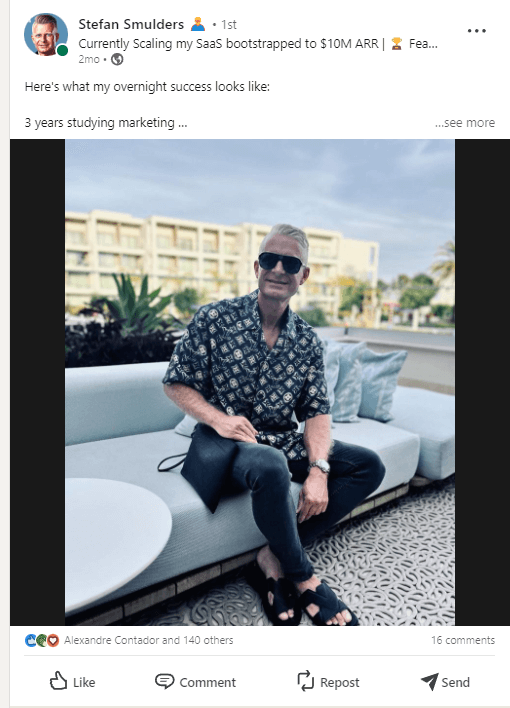
5. Engage with people outside your comments
This is a best practice to keep in mind when doing lead generation and audience building, and it applies to the LinkedIn algorithm update as well.
Essentially, you should also be engaging with people from your comment section and network through cold messages.
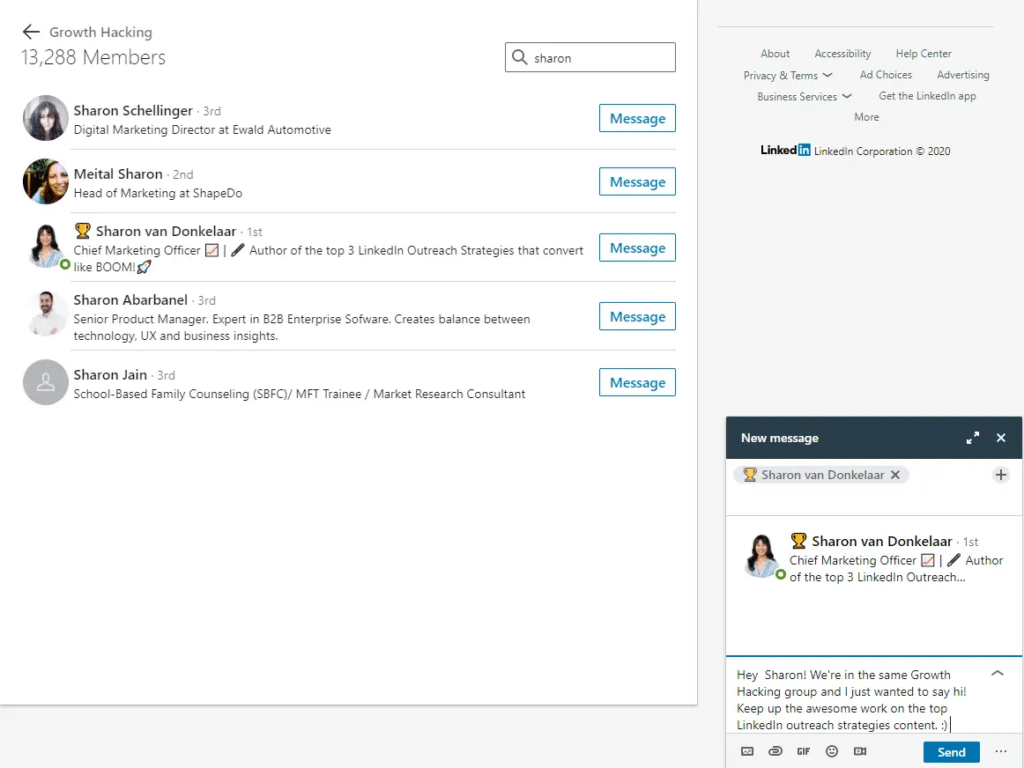
This does a number of things:
- Makes the recipient more likely to engage with your content and work with you.
- They go to your profile and learn more about you.
- LinkedIn algorithm detects the engagement and assumes you’re talking to relevant people part of your target audience.
But putting aside the LinkedIn algorithm here for a while, the most important part of this has to do with generating leads.
Isn’t that the most important part of content creation?
If you’re not booking meetings or getting paying clients – what’s the point?
Fortunately, this can be automated.
Let’s say your post goes viral and gets 100+ comments…
Messaging them one-by-one sounds like too much work, right?
Instead, you can use tools like Expandi to scrape the full list of people who engaged with your comment and automate your outreach.
All you have to do is copy the post URL, paste into Expandi, and the tool will scrape it for you!
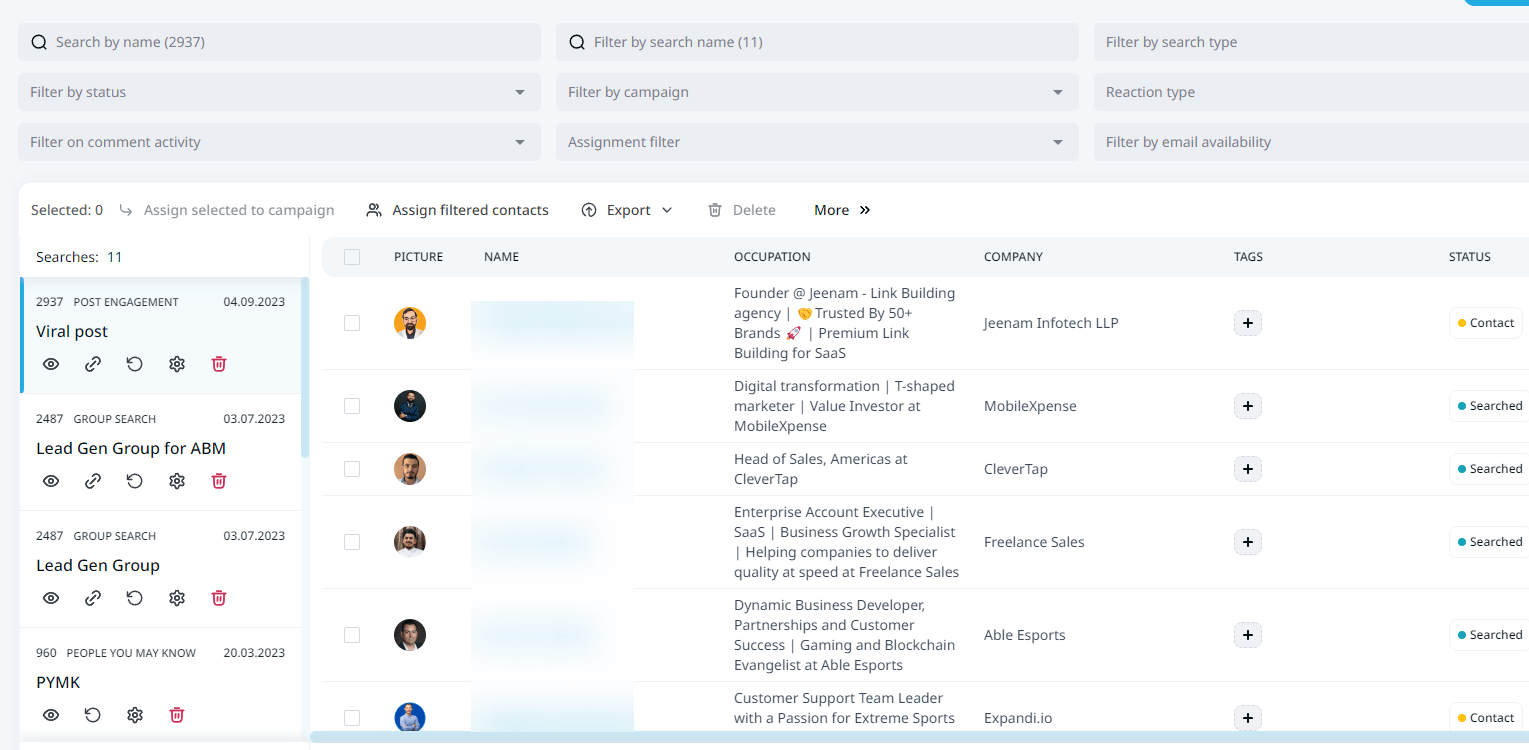
Then, you set up campaigns based on conditions, actions, and personalization tags. So, don’t worry, your outreach will come across as authentic.
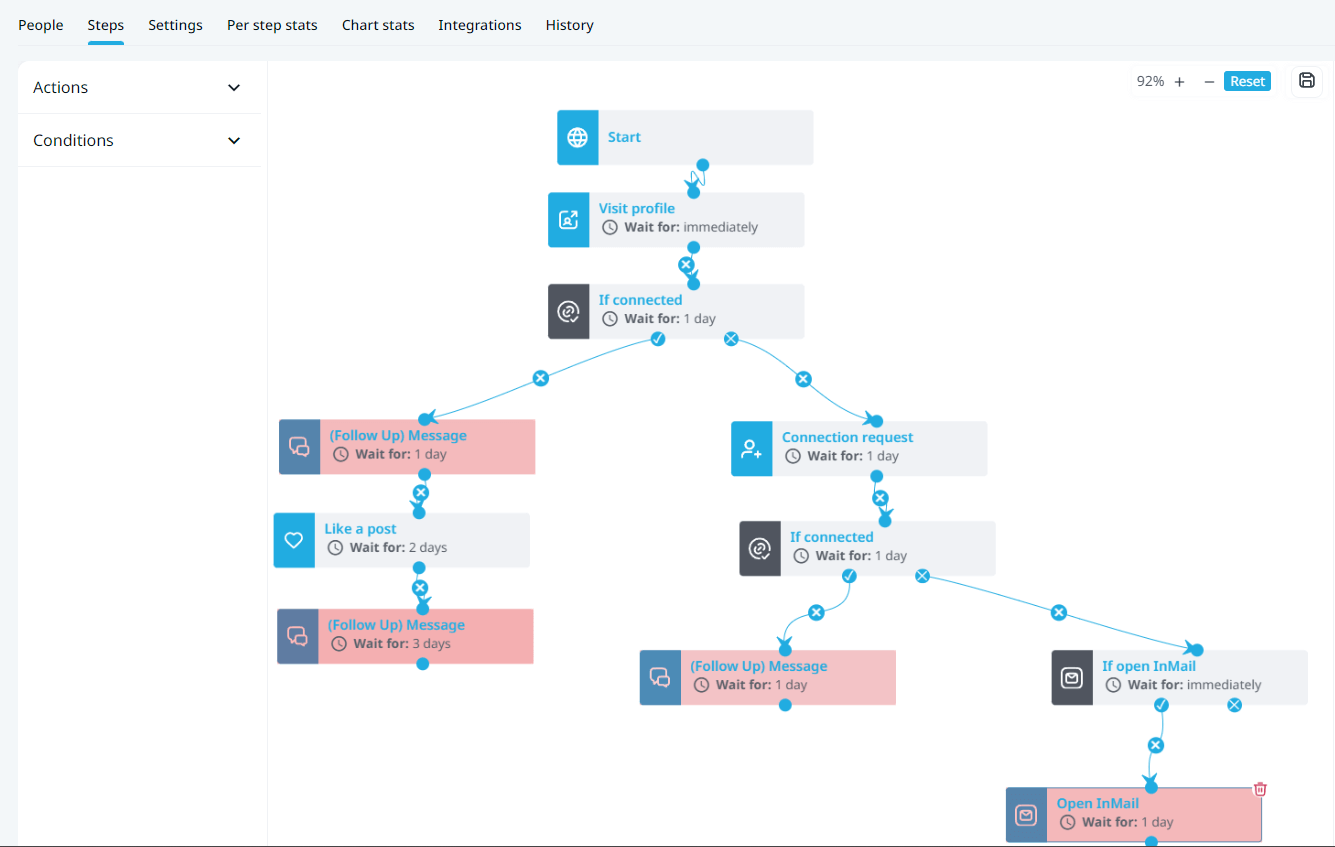
Here’s what this does:
- Visit profiles of people who commented on your post.
- Check if you’re connected.
- If you ARE connected, send a cold message, wait for 2 days, like their post, and then follow up again.
- If you are NOT connected, send a connection request, wait for 2 days, if they accept your request, send a follow up message, if they do NOT accept your request, check if you can send a LinkedIn open InMail.
From there, you can always adjust the conditions and actions, use templates, or even create other types of outreach campaigns.
For a more detailed overview, see our full guide on LinkedIn cold outreach.
Key Takeaways
So, to recap:
- LinkedIn algorithm has changed and how content goes viral is different now.
- Instead of trying to game the algorithm, you should be creating expert content for your first-degree connections based on your topical authority.
- LinkedIn is now prioritizing content from first-degree connections and specifically highlights more expert content.
- So, when creating content, write on your core subjects based on your niche, invite meaningful engagement, don’t be afraid to get personal, and always follow up with potential prospects!
For the last part, you can get started with a free, 7-day Expandi trial and automate your LinkedIn now!
You’ve made it all the way down here, take the final step
